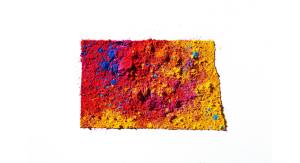Technology was used to undermine democracy, again
Misinformation and disinformation were increasingly widespread on social media and other online platforms in the months leading up to the November election. These ranged from Facebook pages stoking the QAnon conspiracy theory to a robocall, allegedly placed by a pair of right-wing scam artists, that used racist tropes to discourage Black voters in Michigan and other states from casting ballots by mail. Some well-intentioned efforts also confused matters, such as when the Center for Voter Information, a nonprofit group, sent more than 2 million absentee ballot applications, many of which included return envelopes addressed to incorrect election offices. States’ secretary of state offices fought back with education campaigns that encouraged people to be skeptical of all information they read online and only to seek critical information about the voting process from official sources. And though the election itself was described by bipartisan groups of federal, state and local officials as “the most secure in American history,” the weeks since have been consumed by President Donald Trump’s evidence-free attempts to overturn his loss by citing volumes of baseless conspiracy theories that have resulted in election workers being harassed and threatened.



